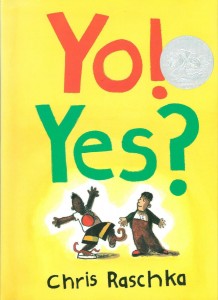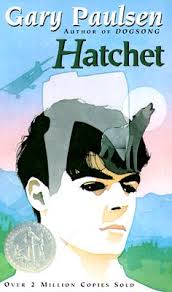In between sipping a coffee and reading your favourite book some of you may be doing some forward planning for 2017.
Many schools celebrate the upcoming months of February and May as Black History Month and Asian Heritage Month. Over the past five years, it has been my pleasure to be part of both of these committees at my school. We have worked hard to prepare our students and communities to honour Black Canadians and celebrate the contributions of Asian Canadians.
There are many criticisms that state that both of these celebrations limit the recognition of Asian and Black Canadians contributions to these designated months. The critics have a very important point. You can fall into the trap of having a classroom lacking in the celebration of diversity for 8 months of the year very easily. I look at Asian Heritage month and Black History Month as an opportunity for me as well as my students. I am not an expert on black history or Asian heritage. My family’s heritage is Acadian and I studied Theatre in University so I recognize that I have a lot of learning to do. In February and May, there are so many great resources put out by ETFO, the Government of Canada and the Archives of Ontario about Black Canadian history and contributions of Asian Canadians that have shaped this wonderful country we live it. There are also many great news stories written and programs on TV. We often have guest speakers in to the school and presentations for the staff.
My goal has been to take all of these activities and resources and use them as a springboard to carry with me throughout the entirety of the year as I make decisions about music, art, dance and drama to be used in my classroom. I listen just as intently as my students when we have special presentations in and engage in discussions with my colleagues who have a much deeper knowledge of this area of history. I still have a lot of learning to do and appreciate the hard work of those who have taken time to share the important role that Black and Asian Canadians have played in shaping our country.
Some fantastic resources and articles that have come out over the past couple of years that has supported my own knowledge are as follows:
a) ETFO Voice had a recent article on Black Lives Matter. It explains how the movement began, the calls to action and a response to the All Lives Matter movement. I will be bringing this article in to use for discussion in January. http://etfovoice.ca/feature/black-lives-matter. Voice also had a great article about going beyond Black History Month. http://content.yudu.com/we1q1ji/0A1z2y9/voicespring2016/html/index.html?page=22
b) The Government of Canada has some information to get you started on both Asian Heritage Month and Black History Month http://www.cic.gc.ca/english/multiculturalism/index.asp
c) The Archives of Ontario has some great resources about Black Canadian history at http://www.archives.gov.on.ca/en/access/black_history.aspx
d) Virtual Museum of Asian Heritage http://www.vmacch.ca/beta/index.html
If you need some ideas of activities for Black History Month or Asian Heritage Month here are a few samples of events and activities we have had in the past.
Daily Announcements: Music will be played at the start of the school day. Students will announce any upcoming events and a quote for the day.
Display Cabinet: The display cabinet at the front foyer of the school will showcase images, quotes and books that focus on the Board’s Black History theme ‘Inspire Inclusion’.
Black History Month Movie Feature: My Friend Martin:
Assembly: A selection of student performances will be prepared for both the morning and afternoon assemblies including a play about Black History, songs, dances and poetry.
Spirit Day: The students and staff will be asked to wear, red, green, and black (the colours of the Pan-Africa flag) to celebrate the end of Black History Month.
Black History Quilt Story & Activity: There will be two Quilt Making Activities. The story the Patchwork Path will be read before the activity.
DPA Activities: Various BHM activities will be placed on our shared drive.
Our Asian Heritage Calendar from a few years ago.
| Monday | Tuesday | Wednesday | Thursday | Friday |
| 1 What: Origami When: 1st N.B. Where: Ms. Parmar’s Room (221) Who: Gr. 2-3 | 2 What: Asian Indoor Games When: 1st and 2nd N.B. Where: Ms. Parmar’s Room/ Ms. Hundal’s Room Who: Gr. 1-2 (Rm 221) Gr. 4/5 (Rm 218) | |||
| 5 What: Origami When: 1st N. .B. Where: Ms. Parmar’s Room Who: Gr. 1 | 6 What: Arts and Crafts When: 1st and 2nd N.B. Where: Ms. G a llant’s Room (Noest/ Parmar) Who: Gr. 2/3 | 7 What: Bollywood Dance When: 1st N.B. Where: Ms. Gallant’s Room (Rahim) Who: Gr.’ 4/5 | 8 What: Yoga When: 1st N.B. Where: Ms. Gallant’s Room Who: Gr. 1/2 | 9 What: Asian Indoor Games When: 1st and 2nd N.B. Where: Ms. Parmar’s Room/ Mrs. Tariq’s Room Who: Gr. 3 |
| 12 What: Japanese Calligraphy When: 2nd N.B. Where: Forum Who: Gr. 3-5 BOOK RELAY (all grades) | 13 What: Dance When: 2nd N.B. Where: Forum Who: Gr. 1-3 | 14 What: Bollywood Dance When: 1st N.B. Where: Forum Who: Gr. 4/5 | 15 What: Henna When: 1st and 2nd N.B. Where: TBD Who: Gr. 4/5 | 16 What: Henna When: 1st and 2nd N.B. Where: TBD Who: Gr. K-3Samosa Day! |
| 19 VICTORIA DAY! | 20 What: Asian Indoor Games When: 1st and 2nd N.B. Where: Ms. Parmar’s Room/ Ms. Hundal’s Room Who: Gr. 1-2 (Rm 221) Gr. 4/5 (Rm 218) | 21 What: Yoga When: 1st N.B. Where: Ms. Gallant’s Room Who: Gr. 2/3 | 22 What: Bollywood Dance When: 1st N.B. Where: Forum Who: Gr. 4/5 | 23 Staff Luncheon! |
| 26 What: Arts and Crafts When: 1st and 2nd N.B. Where: Ms. G a llant’s Room (Noest/ Parmar) Who: Gr. 4/5 | 27 What: Kite Making When: 1st and 2nd N.B. Where: Ms. Gallant’s Room (Parmar) Who: Gr’s 1/2 Cultural Dress Up Day! | 28 What: Dance When: 2nd N.B. Where: Forum Who: Gr. 4-5 | 29 Multicultural Mela (in gym from 3-4) | 30 |




